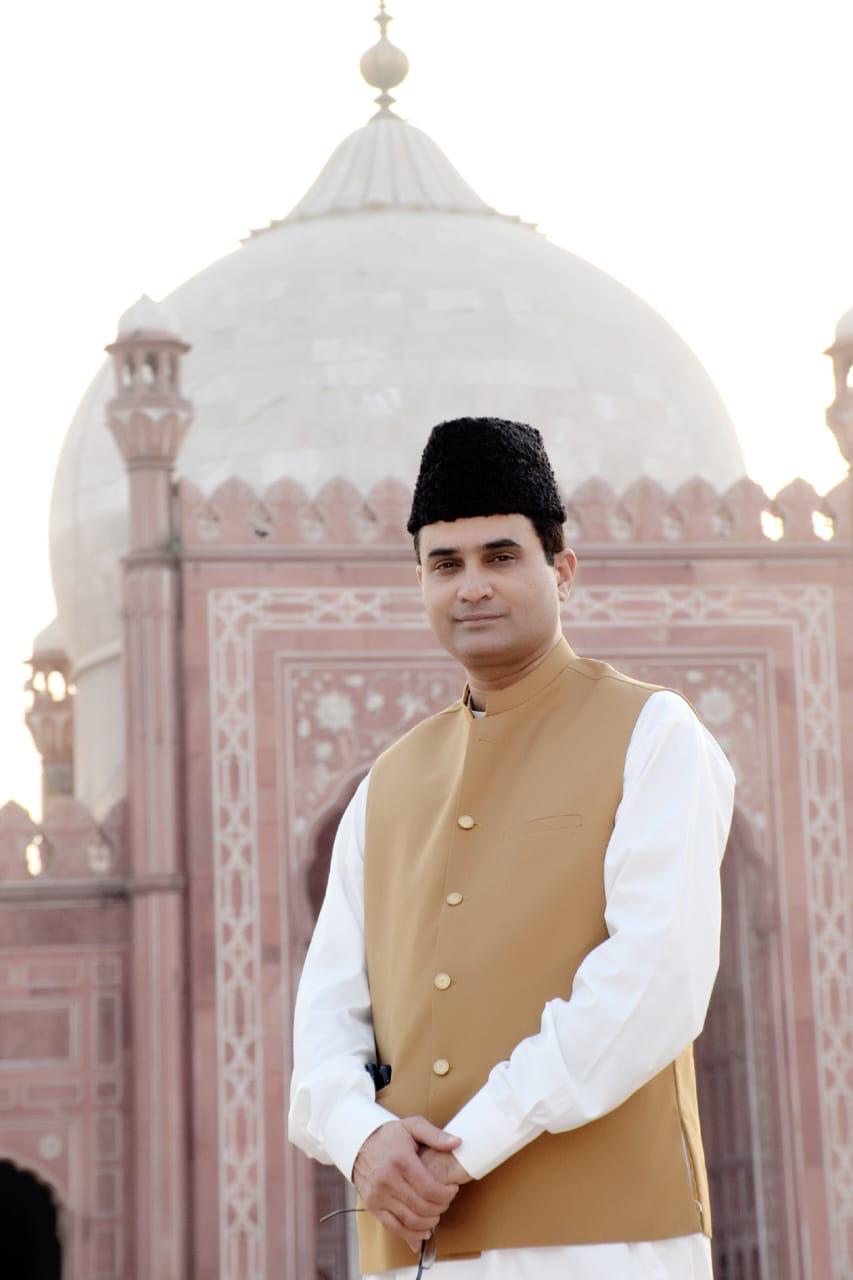Abstract
This paper aims to discuss the “why” factor for lack of opportunities for women on three levels: the big picture (society as a whole), within companies, and at the individual level. In Pakistan, women face significant challenges for finding suitable job opportunities, and these challenges are deeply rooted in societal and cultural norms. Moreover, the paper also discusses the impact of the China-Pakistan Economic Corridor (CPEC) on job opportunities for women.
Introduction
In Pakistan, the critical challenge for women facing limited job opportunities is multi-dimensional. This report explores the complex causes of this challenge at three different levels: societal level, organizational level and individual level. Each level comes with different choices and barriers women confront. As a whole, these three levels shape the landscape of women employment in Pakistan.
Moreover, Pakistan has a rich tradition and culture that is grappled with societal structure where gender roles are deeply infused. In this context, women are influenced largely by societal and cultural norms when it comes to choosing a career path. Due to gender biases and pre-defined socio-cultural factors, women are left with limited options. Notably, women are now increasingly entering Pakistan workplace; therefore, it is also critical to understand their income expectations and underlying determinants. Despite this development, women continue facing wage inequities, earning approximately 20% less than men in similar roles.
In addition, CPEC (China Pakistan Economic Corridor), a massive project between Pakistan and China was previously viewed as a solution to Pakistan’s employment problems with jobs being created in the infrastructure, energy, and manufacturing sectors. However, the quality of jobs, skill gap and local inclusion pose challenges that demand focused strategies to maximize opportunity benefits for both men and women.
Multi-level Insights to understand the reasons behind the lack of opportunities for females in Pakistan
To have an in-depth understanding of diversity management at the organizations and reasons behind lack of opportunities especially for females, it is important to look at three levels: Big Picture (Macro-Societal Level), Company Level (Meso-Organizational Level) and Individual Level (Micro-Individual Level).
Macro-societal level
The Macro-societal level provides a broad view of society. It includes the societal factors such as culture, religion, gender shape the career path of employees (Syed, 2008a, p. 31). The factors mentioned, together with legal and economic factors as well, creates a big picture context for equal opportunities for females.
Besides that, it is also significant to consider the way sociological and institutional forces affect equal opportunity at any workplace. Since Organizations exist in the society and thus affected by the societal factors. Therefore, the macro-societal level suggests that the discriminatory policies and decisions of an organization should not be judged without considering the bigger picture (DiMaggio and Powell, 1991). For instance, when an organization faces market uncertainty, it responds by adopting new strategies to comply with societal/cultural norms and relevant laws (Guthrie and Roth, 1999).
With this perspective, people and organizations are like translators who understand and respond to norms of the society they operate in.
To understand how societal norms actually affect the policies of organizations, let’s take an example into account. In religious and cultural context, Pakistani societies are inspired by Islamic traditions where husbands are supposed to be the providers of bread and butter for females as well as children. Therefore, there are very limited incentives for females to engage in work outside.
While Islamic law allows women to work, the real Islamic requirements for female employment and female workplace behaviour are substantially tougher than those for men (Syed et al., 2005).
In addition to macro-societal values, regulatory context also influences the way organizations approach equal opportunities for females. Regarding this, a study was conducted in China which revealed that the high rate of women participating in employment is influenced by state efforts at large. The results were reflected from the state’s formulation of regulatory and progressive policies to promote and protect women’s rights to work and social life (Cooke, 2001).
Meso-organisational level
The Meso-organizational level stands between macro-society and micro-individual level. At this level, each organization has some specific factors in place such as management and structure that deal with diversity within the organization. So, directly or indirectly, these factors affect the career paths of the employees (Syed, 2008a, p. 36).
Here we also need to consider some limitations of policies and procedures of an organization. Sometimes, organizations do advocate for equality, but their policies contradict cultural norms. Ultimately, the adopted policies are seen as a formality only; therefore, opportunities are not enhanced for the females underscoring the gap between policy and practice (Dickens, 2000, p. 157).
Moreover, Macro-societal level also influences Meso-organizational level considerably. This means whatever happens at societal level affects the policies and practices of the organization. For instance, if Pakistan introduces new legislation that strongly supports and promotes female inclusion and opportunities, the organizations will be more likely to revise their policies related to recruitment practices, cultural shift, and equal pay etc.
Micro-individual level
To make out female employment experiences better, it is crucial to look at the individual factors at the micro-individual level. At this level, every employee, specifically female employee, has her unique identities that influences her experience and her job preference (Syed, 2008a, p. 37).
That means despite influences of macro-societal and meso-organizational level, female employees from disadvantaged group may also be deprived of opportunities due to their personal barriers despite the societal and organizational efforts.
Considering this, female candidates also make personal decisions and strategies irrespective of rules and norms. It’s not always about fearing punishment or fitting in; sometimes, it’s about what individuals personally want.
Let’s take an example of Central Civil Service (CSS) exam in Pakistan. Majority of women usually prefer Pakistan Administrative Service (PAS) instead of Foreign Service of Pakistan (FSP) because they must settle with someone and get married one day. So, working for FSP may quite be challenging for women especially since it requires frequent travelling.
It means micro-level perspective helps us understand that women have the freedom to choose their career paths. For example, some women might prioritize work-life balance more than men mentioned in above example, and this can influence their career choices.
In addition to this, Hakim’s (2006) preference theory also suggests that the women prefer work-life balance than men do. This is why the phenomena of pay gap, career gap, etc. is also raised by women’s own preferences as well.
While in macro-societal level, men are supposed to be financial supporters of his family, whereas females are thought of primarily as a homemaker and are pressurized to choose flexible work arrangements.
Job Preferences among Women in Pakistan
Pakistan is a male-dominated society where women are subjected to cultural, structural challenges and traditional patriarchal norms (Ferdoos, 2005). Therefore, the job preferences of a woman are also shaped by the socio-cultural and economic factors.
That means, women have limited occupational choices in Pakistan because of socio-cultural factors and inherent gender bias in the society and in the labor market.
Moreover, the predetermined role of a woman as a “housewife” or a “homemaker” further labels her human capital as inferior as compared to that of a man. As a result of this societal discrimination, the labor market’s secondary sector is much concentrated by women (Syed et al., 2009). Service sector and retail jobs are examples of secondary labor.
In Pakistan, women face cultural pressure to cover themselves in the form of “Purdah” (veil) for their gender seclusion. The tradition of veiling then restricts women to stay inside the home as described by UNDP (1996). Moreover, women are also restricted from their access to education, employment, social services etc. The career women face the barriers to their independence in life as well. Rather, they need a man to look after them (Alavi, n.d.).
According to a gender profile report by Sustainable Develop Policy Institute (SDPI) (2008), the status of women in among the lowest in the world. However, in Pakistan, it should be noted that there is growing awareness regarding opportunities and rights of a woman. It means the people are now recognizing and advocating opportunities for females. As a result, the literacy rate of women has increased from 13.7 percent in 2000 to 19.6 in 2008 (Labour Force Survey, 2008/2009)
However, the number of women with jobs is quite small compared to other nearby countries like India, Bangladesh, and Sri Lanka (Ali, 2010). When more women are educated, they are better prepared for employment and can access job opportunities.
In addition to people’s growing awareness, government has also taken some steps that have contributed towards promoting opportunities and equal pay rights of females. For example, in 2001, Pakistan ratified the International Labor Organization (ILO)’s Equal Remuneration Convention. The convention aimed to promote opportunities and equal pay for equal work, regardless of gender.
It is notable that in developing countries such as Pakistan women encounter some assumptions as well as hindrances when it comes to their career development. Therefore, it becomes difficult for women to pursue career that require travel or irregular working hours (Nath 2001).
However, these challenges do not arise in man’s career path. For example, women are least passionate about engineering and technology because they have been facing certain assumptions and having deep-seated societal norms that women are not suitable these options since childhood.
In addition to those assumptions, societal expectations and constraints related to religion, culture, and social norms influence their choices and preferences. While women in Pakistan have made significant strides in various fields and have transformed their roles and responsibilities, certain barriers and expectations persist.
Today, women are engaged in various areas that demand higher skill sets, expanding their career options beyond traditional roles in agriculture or manufacturing. These shifts are driven by globalization and technological advancements (Catalyst 2004a).
This is why women now make up a significant contribution towards Pakistan’s economy and thus it is steadily growing. Despite this progress, men still dominate higher positions in both private and public offices. However, there is a shift as women are being encouraged and recognized with promotions for their high-quality work.
Above all, the economic necessity, shifting social norms, and increased educational opportunities are driving women to pursue careers and play more significant roles in society. As women gain access to education and economic independence, their preferences for employment and career development have also changed.
Income Expectations of Women
The role of women, no doubt, is significantly increasing in the labor market over the years. This transition does reflect a change in people’s mindset and economic landscape. Moreover, it is equally important to understand the income expectations of female job seekers since it can provide valuable insights into their financial goals and the factors influencing their career choices.
According to a policy brief by Gender, Growth and Labor Market in the Low-Income Countries program, the participation of women in labor force is already lower than as that of the men (49% for women compared to 76% for men) in Pakistan and the women who do manage to work are paid lower than men (approximately 20%) working in similar jobs.
Moreover, through Job Talash, a series of experimental research studies is being conducted to understand gender wage disparities and labor market frictions in urban Pakistan. Job Talash is job search platform in Pakistan developed by the Center for Economic Research includes information from over 10,000 jobseekers and 1,200 firms in Lahore.
Data Collection
- The Job Talash service focuses on jobseekers and firms in Lahore, Pakistan, a city with over 10 million people.
- They conducted an initial enrollment by listing around 50,000 households in Lahore, and for each household member, they asked if they were interested in signing up for Job Talash.
- Detailed information on education, work experience, and job search preferences was collected from those interested in using the service.
- To enroll firms, a representative sample of firms across Lahore was listed, and enumerators presented the Job Talash service to these firms, offering them the opportunity to enroll and list job vacancies.
Insights on Salary Expectations
- Women tend to set their salary expectations lower than men. For example, 32% of women expect salaries below PKR 20,000 per month, whereas only 16% of men have similar low salary expectations.
- Salary expectations increase with higher education levels, but a gender gap persists. Men, at all education levels, expect higher salaries than women, and this gap grows with education. At the highest education levels, men expect salaries 27% higher than women with the same education.
Salary Disparities
- Regardless of gender, job seekers expect higher salaries than those listed by employers. Both male and female job seekers expect higher salaries compared to what firms advertise in job listings.
- Differences in occupation do not explain the gender gap in posted salaries. In about 62% of the occupations, men are paid more than women.
- Larger firms tend to offer higher salaries but also have a larger gender gap in salaries. As firm size increases, the salary gap between men and women also increases.
- Mixed-gender firms tend to offer higher salaries than male or female-dominated firms. Within male-dominated and female-dominated firms, the average salary listed is higher for male-dominated ones. Jobs with no gender preference tend to have higher salaries.
China-Pakistan Economic Corridor (CPEC) and Youth Opportunities
The megaproject between China and Pakistan named as CPEC (China-Pakistan Economic Corridor) is considered an important project for both countries’ economies (Khan et al., 2022). However, this report focuses specifically on the project’s effects on the economy of Pakistan and its benefits for Pakistani youth, including females.
Pakistan, with a median age of 22.7 years, boasts a youth population that comprises a significant portion of its demographic landscape (Khan et al., 2022). This demographic dividend presents a unique opportunity for economic growth and development. In this context, it is imperative to explore and discuss the potential job opportunities and benefits available to Pakistani youth, with a focus on empowering women to actively participate in the workforce.
Since CPEC was believed to address the unemployment in Pakistan; however, its impact on unemployment reduction is subject to various factors and ongoing evaluation (Rashid, 2018). While CPEC did create jobs related to infrastructure development, energy and manufacturing related but it is also important to discuss its challenging aspects.
Quality of Jobs
CPEC has created new job opportunities for job seekers but there is a growing concern regarding the quality of jobs. Notably, the jobs are perceived as temporary or low-skilled ones, offering limited job security and lower wages. For instance, Low-skilled Labor in Infrastructure Construction such as highways and bridges. Many laborers who are hired for these construction jobs are on project-basis. That means, once the project ends, their job also ends unless a new project commences right after (Zahid, 2020) Such jobs have certain limitations such as temporary nature, low wages and limited skill development etc.
Moreover, for women already face societal and cultural barriers to acquiring jobs in construction at the first place. Therefore, they are concentrated in informal sectors limiting their earning potential as well as career growth. Considering this, Policymakers should focus on creating jobs for well-compensated positions so that the quality of employment could be improved for both men and female.
Skills Mismatch
In Pakistan, there is notable skill gap so that the available workforce may not own the specific skillset as well as qualifications mandatory for jobs in CPEC-related industries. For example, the energy sector of CPEC, especially in power generation and management since CPEC has initiated many projects including coal-fired power plants, hydroelectric facilities, and wind farms (Zahid, 2020)
To make these power plants work smoothly, highly qualified engineers with a strong background in electrical or mechanical engineering, thermodynamics, and control systems are required. As mentioned previously that women often have limited access to education and vocational training. Therefore, they find it more challenging to fill this gap resulting in underemployment or unemployment among women.
As far as skill mismatch is concerned, Pakistan officials must invest in educational and skill developing training. In addition to this, encouraging women to choose career paths n science, technology, engineering, and mathematics (STEM) fields can help them access higher-skilled positions in CPEC projects.
Local Inclusion
In the local communities of underdeveloped regions of Pakistan has a very critical challenge when it comes to CPEC job opportunities. Since women from those rural areas do not access to information about job openings and face cultural barriers to work outside their communities (Zahid, 2020). For this reason, it is essential to implement action policies focused on hiring residents and women such as Outreach programs etc.
Conclusion
To sum up, women face several challenges when it comes to finding work in Pakistan. These challenges are strongly rooted in society standards and gender bias. While there has been some development in recent years, but much work remains to be done to guarantee women have equal opportunities in the labor market. China-Pakistan Economic Corridor (CPEC) has created jobs, although they are frequently transitory and low-paying. To improve the quality of jobs for both men and women, governments should prioritize the creation of well-paying positions. Addressing the skills gap and encouraging women’s engagement in disciplines such as science and technology will also assist women gain access to higher-skilled positions in CPEC projects. Finally, local communities require improved access to information about career prospects and women’s support.
References
Khan, Dr. A., Ilmas, F., Zubair, M., Khan, A., & Zhong, Prof. Dr. L. H. (2022). The Impact Of CPEC On The Economy Of Pakistan. Journal of Positive School Psychology.
Wu, J., Jain, V., Shahid, A., & Khan , L. (2021). (issue brief). Analyzing Gender Differences in Pay in the Pakistani Labor Market (pp. 1–2). Bonn, Germany: Institute of Labor Economics.
Syed, J. (2008a), “Employment prospects for skilled migrants: a relational perspective”, Human
Resource Management Review, Vol. 18 No. 1, pp. 28-45.
DiMaggio, P.J. and Powell, W.W. (1991), “Introduction”, in Powell, W.W. and DiMaggio, P.J. (Eds),
The New Institutionalism in Organizational Analysis, University of Chicago Press, Chicago,
IL, pp. 1-40.
Guthrie, D. and Roth, L.M. (1999), “The state, courts, and maternity policies in US organizations:
specifying institutional mechanisms”, American Sociological Review, Vol. 64 No. 1, pp. 41-63.
Syed, J., Ali, F. and Winstanley, D. (2005), “In pursuit of modesty: contextual emotional labour and
the dilemma for working women in Islamic societies”, International Journal of Work,
Organisation and Emotion, Vol. 1 No. 2, pp. 150-167.
Cooke, F.L. (2001), “Equal opportunity? The role of legislation and public policies in women’s
employment in China”, Women in Management Review, Vol. 16 No. 7, pp. 334-348
Dickens, L. (2000), “Still wasting resources? Equality in employment”, in Bach, S. and Sisson, K.
(Eds), Personnel Management, 3rd ed., Blackwell, Oxford, pp. 137-169.
Hakim, C. (2006), “Women, careers, and work-life preferences”, British Journal of Guidance and
Counselling, Vol. 34 No. 3, pp. 279-294.
Ferdoos, A. (2005), “Social status of urban and non-urban working women in Pakistan – a
comparative study”, unpublished PhD dissertation, University of Osnabrueck,
Osnabrueck.
Syed, J. and O¨ zbilgin, M. (2009), “A relational framework for international transfer of diversity
management practices”, International Journal of Human Resource Management, Vol. 20
No. 12, pp. 2435-2453.
UNDP (1996), “Economic growth and human development”, human development report, UNDP,
available at: http://hdr.undp.org/en/reports/global/hdr1996/chapters/ (accessed October 2023).
Alavi, H. (n.d.), “Pakistani women in a changing society”, available at: www.sacw.net/Wmov/
alavi.html (accessed October 2023).
Sustainable Develop Policy Institute (SDPI) (2008), “Pakistan: country gender profile”, available
at: www.sdpi.org/research_Programme/human_development/country_gender_profile_
l.pdf (accessed October 2023).
Labour Force Survey (2008/2009), available at: www.statpak.gov.pk/depts/fbs/publications/
lfs2007_08/lfs2007_08.html (accessed October 2023).
Ali, F. (2010), “A comparative study of EEO in Pakistan, India and Bangladesh”, in O¨ zbilgin, M.
and Syed, J. (Eds), Managing Gender Diversity in Asia: A Research Companion, Edward
Elgar, Cheltenham, pp. 32-53.
Nath V (2001) Empowerment and Governance through information and communication technologies: women’s perspectives. Inform Lib Rev 33:317–339
Catalyst (2004a) Women in business: a snapshot. New York. [Online] Available: http://www.catalystwomen.org/bookstore/files/fact/ Snapshot%202004.pdf
Rashid, S. (2018). CPEC | China-pakistan economic corridor (CPEC) secretariat Official Website. https://www.cpec.gov.pk/brain/public/uploads/documents/working-paper-028.pdf
Zahid Khan, Guo Changgang, Muhammad Afzaal, Riaz Ahmad & Samuel Aron Issack (2020) Debunking Criticism on the China-Pakistan Economic Corridor, The Chinese Economy, 53:6, 477-487, DOI: 10.1080/10971475.2020.1792065
 0092-313-5000-734
0092-313-5000-734






Highly commendable & exhaustive research work. The researcher has very minutely observed and analysed the persistent challenges women continuously encounter with respect to the job opportunities in Pakistan. The research has investigated in abundance the complex socio- cultural norms and moors which have always confronted and confined women within narrow boundaries. It is really the need of the hour to explore new avenues to provide space to women for equalization in all fields to have a successful lifestyle.